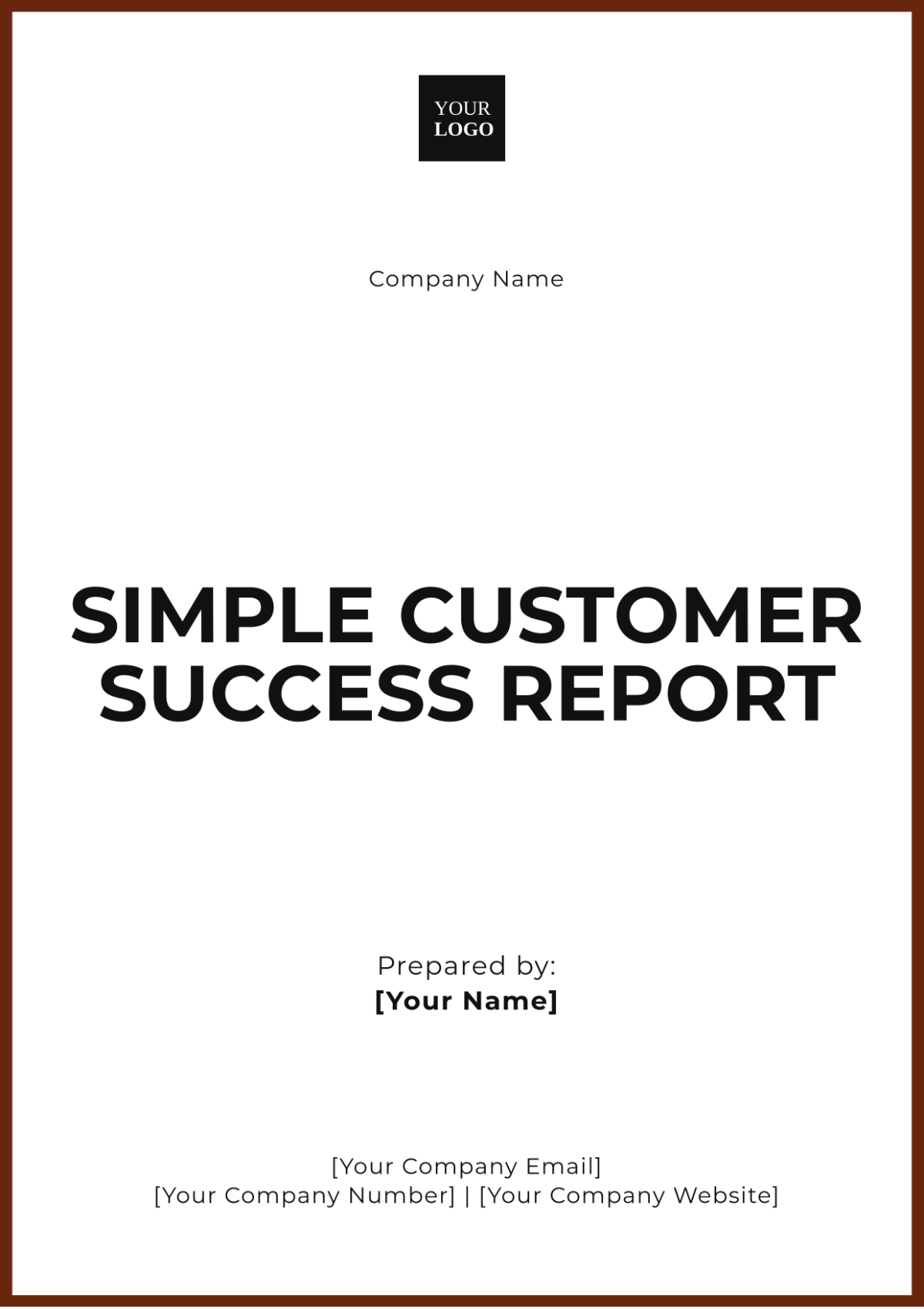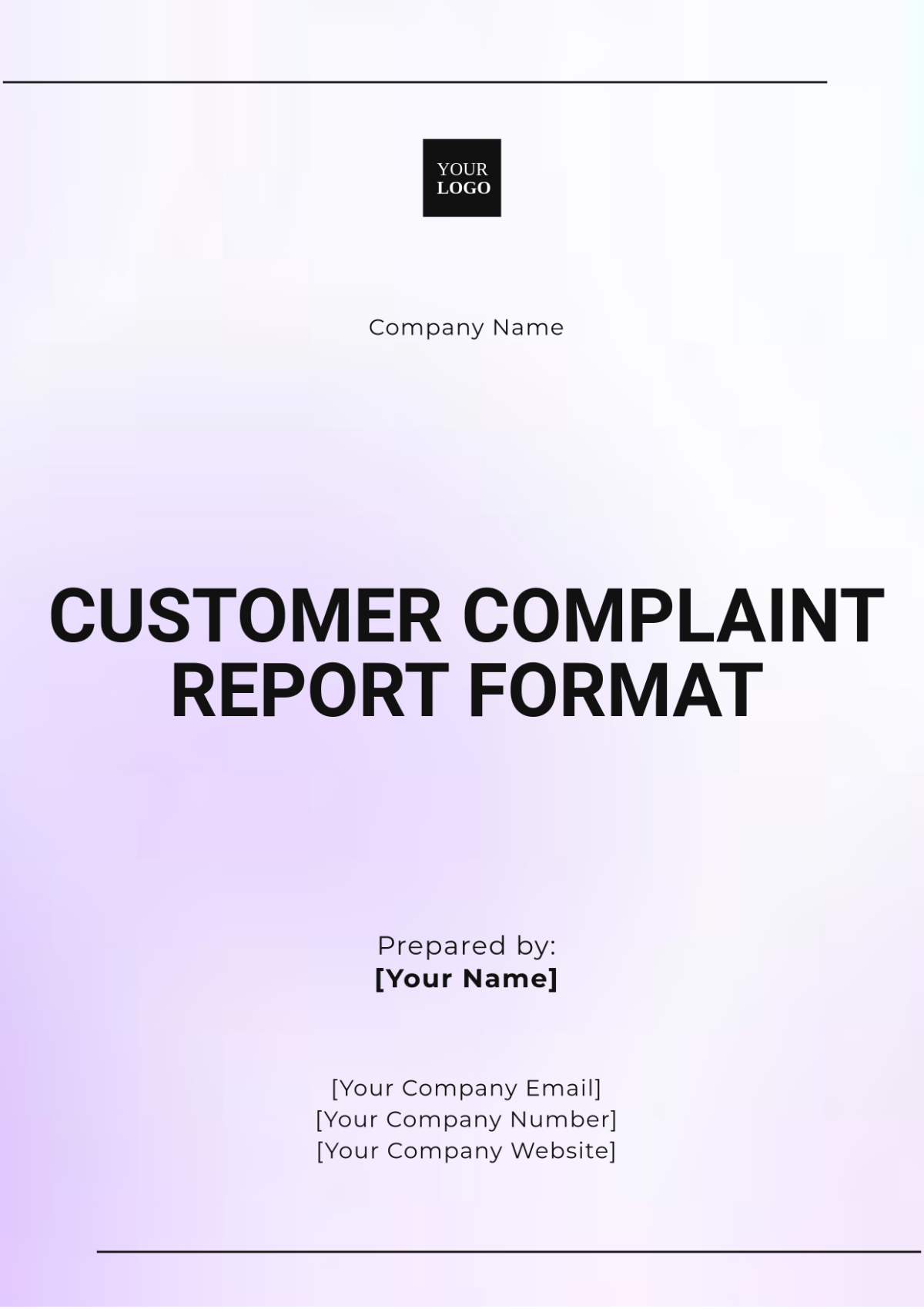Customer Response Report
Prepared by: [Your Name]
Company: [Your Company Name]
Date: [Date]
I. Executive Summary
This Customer Response Report provides an in-depth analysis of customer feedback, inquiries, and interactions over the past quarter (July to September 2054). The data indicates an overall satisfaction rate of 85%, reflecting positive engagement with our brand. However, notable areas of concern were highlighted, particularly in customer support response times (72% satisfaction) and product issue resolution (70% satisfaction). This report outlines actionable recommendations to enhance customer satisfaction, streamline service strategies, and ultimately foster long-term loyalty.
II. Introduction
Understanding customer sentiment is pivotal for business success. This report aims to gauge customer satisfaction, identify emerging trends, and evaluate the effectiveness of current customer service strategies. The company can improve its service offerings and customer engagement approaches by analyzing feedback and inquiries. The ultimate goal is to ensure our customers feel valued and supported, which is crucial in maintaining our competitive edge in the market.
III. Methodology
This section outlines the methods employed to collect and analyze customer feedback.
A. Data Collection
Data was collected from multiple channels, ensuring a comprehensive view of customer interactions:
Customer Feedback Forms: Surveys sent post-interaction to gauge customer satisfaction.
Support Email Inquiries: Analysis of inquiries received via our support email, focusing on response times and issue types.
Social Media Interactions: Monitoring customer feedback on platforms like Twitter, Facebook, and Instagram for real-time insights.
Live Chat Sessions: Review of chat transcripts to evaluate the quality of support provided and common customer inquiries.
B. Data Analysis
The collected data was subjected to both quantitative and qualitative analysis:
Quantitative Analysis: Statistical tools, such as regression analysis, were used to measure satisfaction levels across different service aspects. A satisfaction scale from 1 to 100 was employed to quantify responses.
Qualitative Analysis: Thematic analysis was performed to identify common concerns and suggestions, categorizing feedback into themes such as “response time,” “product quality,” and “support channels.”
IV. Findings
This section summarizes the key findings from the data analysis.
A. Customer Satisfaction Levels
The overall customer satisfaction rate stands at 85%. A breakdown of satisfaction metrics is presented in Table 1.
Service Aspect | Satisfaction Level |
|---|---|
Product Quality | 90% |
Customer Service | 78% |
Response Time | 72% |
Issue Resolution | 70% |
B. Trends and Patterns
Emerging trends from customer feedback include:
Increased Preference for Faster Support Channels: Customers have expressed a strong desire for quicker responses, particularly through live chat and social media platforms.
High Demand for Improved Self-Service Options: There is a growing trend towards self-service, with customers seeking easy access to FAQs and troubleshooting guides.
Common Issues Reported with Product X: Frequent complaints about Product X’s functionality were noted, particularly regarding its compatibility with certain operating systems.
V. Recommendations
Based on the findings, several recommendations are proposed to enhance customer satisfaction:
A. Improve Response Time
Training and Development: Implement additional training sessions for support staff to enhance their efficiency and effectiveness in responding to inquiries. Regular workshops focusing on communication skills and problem-solving techniques can lead to better customer interactions.
Automation of Standard Queries: Invest in automation technologies, such as chatbots, to handle frequently asked questions and standard inquiries. This will free up support staff to address more complex issues.
B. Enhance Product Quality
Product Review and Quality Checks: Conduct a comprehensive review of Product X to address common issues reported by customers. Involve product development teams in feedback sessions to gather insights directly from customer experiences.
Ongoing Quality Assurance Checks: Implement a robust quality assurance program to maintain high product standards. This includes regular testing and updates to ensure compatibility with various operating systems.
C. Develop Self-Service Solutions
FAQ Section and Self-Help Portals: Introduce a detailed FAQ section on the company website, supplemented with instructional videos and troubleshooting guides. This will empower customers to resolve their issues independently, reducing reliance on direct support channels.
Customer Feedback Loop: Establish a feedback loop where customers can suggest topics for future self-service content, ensuring that the resources provided align with their needs.
VI. Conclusion
The analysis of customer feedback indicates a high level of satisfaction overall, yet highlights specific areas for improvement, particularly in response time and issue resolution. By implementing the suggested recommendations, the company can significantly enhance customer interactions, improve overall satisfaction levels, and foster long-term loyalty. Continuous monitoring of customer feedback will be essential to adapt and refine strategies as customer expectations evolve, ensuring that the company remains responsive and customer-focused.








































